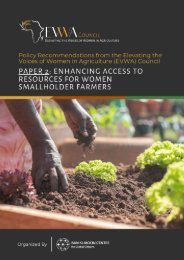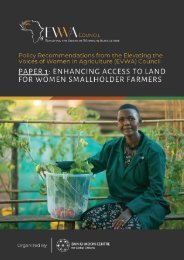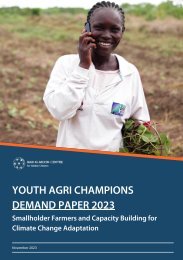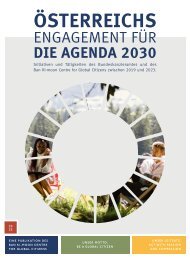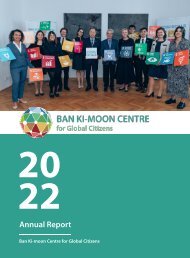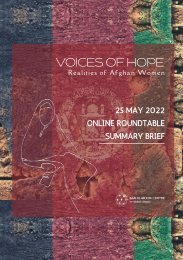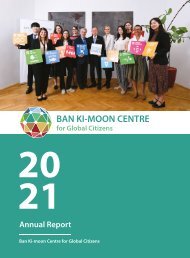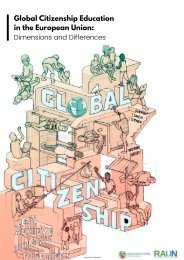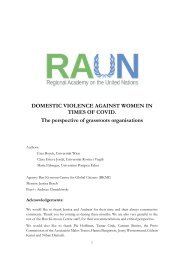Europe and North America Regional GCED Network
The report “Europe and North America Regional GCED Network” is based on a research project funded by Asia-Pacific Centre of Education for International Understanding (APCEIU) and Ban Ki-moon Centre for Global Citizens (BKMC) led by Lynette Shultz (Centre for Global Citizenship Education and Research, University of Alberta) and Massimiliano Tarozzi (International Research Centre on Global Citizenship Education, University of Bologna) as Principal Investigators. The research team was composed of Carrie Karsgaard and Carla Inguaggiato, with the support of Kester Muller and Francis Owusu.
The report “Europe and North America Regional GCED Network” is based on a research project funded by Asia-Pacific Centre of Education for International Understanding (APCEIU) and Ban Ki-moon Centre for Global Citizens (BKMC) led by Lynette Shultz (Centre for Global Citizenship Education and Research, University of Alberta) and Massimiliano Tarozzi (International Research Centre on Global Citizenship Education, University of Bologna) as Principal Investigators. The research team was composed of Carrie Karsgaard and Carla Inguaggiato, with the support of Kester Muller and Francis Owusu.
You also want an ePaper? Increase the reach of your titles
YUMPU automatically turns print PDFs into web optimized ePapers that Google loves.
instead of dividing the work into two subteams.<br />
5.6. Research ethics procedures<br />
The plan for this study has been reviewed by a Research Ethics Board at the<br />
University of Alberta. The interviews have been administered on a secure Zoom<br />
link <strong>and</strong> not recorded. Instead, participants' responses were documented in a<br />
survey tool. Thus, there was very limited risk to organizations as participants in<br />
this study. The team has taken care in storing the information provided. While the<br />
respondents' personal information will be reported anonymously, the names of<br />
all organizations will be made public in the research through the visual mapping<br />
of networked relations <strong>and</strong> in the discussion of the <strong>Europe</strong>an – <strong>North</strong> <strong>America</strong>n<br />
network. This information could benefit all organizations working in <strong>GCED</strong> in the<br />
region.<br />
The respondents' participation was voluntary, <strong>and</strong> even if organizations chose<br />
to participate, they could change their minds later. After that, the research<br />
team began to aggregate the data; it is no longer possible to remove specific<br />
information.<br />
All data will be stored in a safe, password-protected, encrypted computer file<br />
for 5 years. It will only be used by members of the study team for a report for<br />
the Asia Pacific Centre for Education <strong>and</strong> International Underst<strong>and</strong>ing <strong>and</strong> for<br />
the work of the principal researchers leading the study. In addition, findings<br />
will be presented in a report for organizations working in <strong>GCED</strong> <strong>and</strong> academic<br />
writing <strong>and</strong> presentation to the international academic community.<br />
When invited to the interview, all respondents received a copy of the ethics<br />
information <strong>and</strong> consent form so that they could confirm their acceptance of the<br />
ethics guidelines for the research.<br />
5.7. Data collection procedures<br />
The data collection team consisted of six researchers: two senior faculty <strong>and</strong><br />
four research assistants, three located in <strong>Europe</strong> <strong>and</strong> three in <strong>North</strong> <strong>America</strong>.<br />
Data collection procedures were fully recorded in a vademecum (Appendix<br />
D) for reference by all researchers to ensure consistency <strong>and</strong> to preserve<br />
methods for further research. All documents were shared digitally, allowing<br />
ongoing collaboration <strong>and</strong> transparency. Here, we outline our main choices <strong>and</strong><br />
procedures in data collection.<br />
5.8. Designing the questionnaire<br />
We developed the questionnaire across multiple iterations to ensure that it<br />
captured both the attributes of <strong>and</strong> relations among organizations in support of<br />
our social network analysis <strong>and</strong> according to the methods described above. The<br />
creation of the questionnaire has been inspired by a survey instrument used in<br />
policy network study (Gronow & Yla-Anttila, 2019).<br />
032ㆍ033




